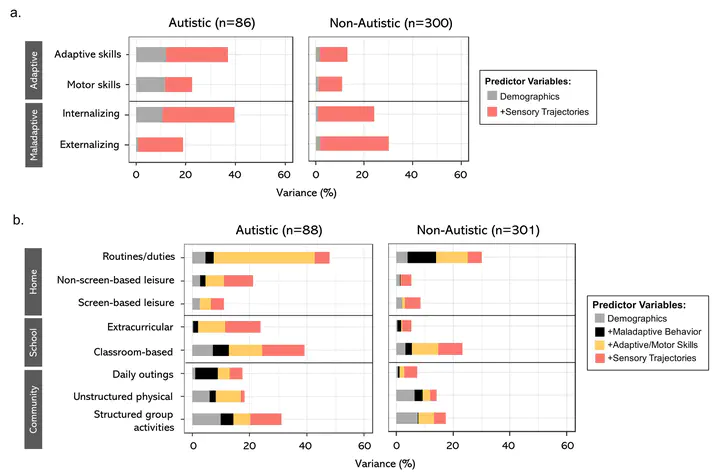Developmental impacts of early sensory patterns on school-age adaptive, maladaptive, and participation outcomes in autistic and non-autistic children

Abstract
Early sensory differences may cascade into later social-communication difficulties in autism, yet their impacts on broader functional outcomes have remained understudied. This study aimed to conduct a comprehensive investigation into the longitudinal impacts of sensory patterns, including sensory hyperresponsiveness, hyporesponsiveness, and sensory repetitions/seeking behavior, on various school-age outcome domains among a community sample of children with autistic and non-autistic conditions. We prospectively followed 1,517 children with caregiver-reported sensory questionnaires across three timepoints from infancy to school age. A subsample (n = 389; 88 with reported autism diagnosis/concerns) was further assessed with adaptive, maladaptive and participation outcome measures at age 6–7. Structural equation modeling approaches were used to evaluate the multivariate associations between latent growth parameters (i.e., intercepts and slopes) of sensory patterns and school-age outcomes. Increasing sensory hyperresponsiveness was directly associated with poorer adaptive/maladaptive outcomes and indirectly with lower participation in activities with higher functional demands across settings at school age. Elevated sensory hyporesponsiveness was associated with lower adaptive functioning, more externalizing problems, and lower classroom participation. Trajectories of sensory patterns accounted for more unique variances in adaptive functioning and participation in daily life settings with higher functional and environmental demands among autistic children compared to their non-autistic peers.